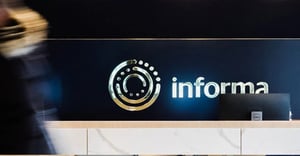Investment trusts have a number of unique features that set them apart from other types of collective funds. One of the most important is the ability to use ‘gearing’, where a trust takes on debt to put more money to work in the financial markets. But how does it work? And why do investment trusts use it?
Capital at risk. The value of investments and the income from them can fall as well as rise and are not guaranteed. Investors may not get back the amount originally invested.
Gearing is where investment trusts borrow to invest. If the stock market goes up – and the fund manager gets their investment selection right – gearing should magnify income and/or capital returns over time. However, gearing can also exaggerate losses and increase volatility because it gives investors a greater exposure to market movements.
With this in mind, it is important to understand the level of gearing a fund manager is employing. It can significantly affect the risk profile of an investment trust. It is worth understanding not only the level of gearing a trust has today, but the limits it sets on gearing, and the type of gearing it employs.
How do trusts decide to use gearing?
The maximum level of gearing is set by an investment trust’s board. The actual level of gearing is in the hands of the investment manager, but often in consultation with the board. Trusts may run with a level of structural gearing, but may also vary gearing depending on the market environment. Some use it to boost capital returns, others to boost income.
In the case of shorter-term borrowing, a fund manager will look at market conditions and decide when it makes sense to borrow and when it doesn’t. If a manager is seeing a lot of good opportunities in the market and believe they can generate a return over and above the cost of debt, they can raise the gearing. Or they can lower it if the cost of borrowing is expensive, or the market outlook is less certain.
The amount it costs to borrow is important. In an era where investment trusts could borrow at 1-2% and stock markets were rising, it made sense to borrow to invest. Investment trust managers could usually generate a sufficiently high return to cover any interest costs they were paying. However, the decision has become more nuanced as interest rates have risen. If an investment trust manager now needs to generate a 5-6% return to meet their cost of borrowing, it may not be worth it.
Types of gearing
Most trusts will hold a mixture of fixed and variable debt. For short-term borrowing, the fund manager will often use a flexible borrowing facility such as an overdraft. This can move higher or lower depending on the market environment. Fund managers may simply sell some holdings to pay it down if costs rise.
Investment trusts may also borrow money through long-term, fixed rate loans, called debentures. In the past, some trusts have been caught out by locking in high borrowing, and not being able to generate sufficiently high investment returns to compensate. As such, trusts are now increasingly careful to keep long-term borrowing costs low.
When analysing an investment trust’s use of gearing, investors will need to look at the type of debt an investment trust has taken on, as this will affect the overall risk of the portfolio. It is important to bear in mind that if the asset prices fall, debt can increase as a percentage of the size of the trust. This in turn may increase risk.
How do you know whether a trust is geared?
The Association of Investment Companies lists the gearing levels for each investment trust, though investors will need to dig into the report and accounts of each trust to find the structure of that gearing and the gearing policy. Most investment managers, including BlackRock, have a dedicated section in the report and accounts that explains the current gearing, maximum gearing and whether the debt is short-term or long-term. Most will also set out their target gearing levels in the near term. Importantly, they should also outline the cost of that gearing.
Used judiciously, gearing can be a powerful tool to enhance returns to shareholders. Over time, stock markets tend to go up[1] and therefore employing some level of gearing can be a sensible option. However, it will increase the risk of an investment trust, and it can magnify losses if the stock market turns down the value of the underlying investments fall. Investors need to be comfortable with the gearing decisions that their investment trust managers take on their behalf.
For more information on BlackRock’s range of investment trusts, please visit www.blackrock.com/its
Sources
1 Is investment trust gearing a worry as interest rates rise? | This is Money – 10/03/23
Risk Warnings
Past performance is not a reliable indicator of current or future results and should not be the sole factor of consideration when selecting a product or strategy.
Changes in the rates of exchange between currencies may cause the value of investments to diminish or increase. Fluctuation may be particularly marked in the case of a higher volatility fund and the value of an investment may fall suddenly and substantially. Levels and basis of taxation may change from time to time.
Important Information
Issued by BlackRock Investment Management (UK) Limited, authorised and regulated by the Financial Conduct Authority. Please refer to the Financial Conduct Authority website for a list of authorised activities conducted by BlackRock.
BlackRock has not considered the suitability of this investment against your individual needs and risk tolerance. To ensure you understand whether our product is suitable, please read the fund specific risks in the Key Investor Document (KID) which gives more information about the risk profile of the investment. The KID and other documentation are available on the relevant product pages at www.blackrock.co.uk/its. We recommend you seek independent professional advice prior to investing.
The Company is managed by BlackRock Fund Managers Limited (BFM) as the AIFM. BFM has delegated certain investment management and other ancillary services to BlackRock Investment Management (UK) Limited. The Company’s shares are traded on the London Stock Exchange and dealing may only be through a member of the Exchange. The Company will not invest more than 15% of its gross assets in other listed investment trusts. SEDOL™ is a trademark of the London Stock Exchange plc and is used under licence.
Net Asset Value (NAV) performance is not the same as share price performance, and shareholders may realise returns that are lower or higher than NAV performance.
Any research in this material has been procured and may have been acted on by BlackRock for its own purpose. The results of such research are being made available only incidentally. The views expressed do not constitute investment or any other advice and are subject to change. They do not necessarily reflect the views of any company in the BlackRock Group or any part thereof and no assurances are made as to their accuracy.
© 2023 BlackRock, Inc. All Rights reserved. BLACKROCK, BLACKROCK SOLUTIONS and iSHARES are trademarks of BlackRock, Inc. or its subsidiaries in the United States and elsewhere. All other trademarks are those of their respective owners.
MKTGH1023E/S-3180866







































